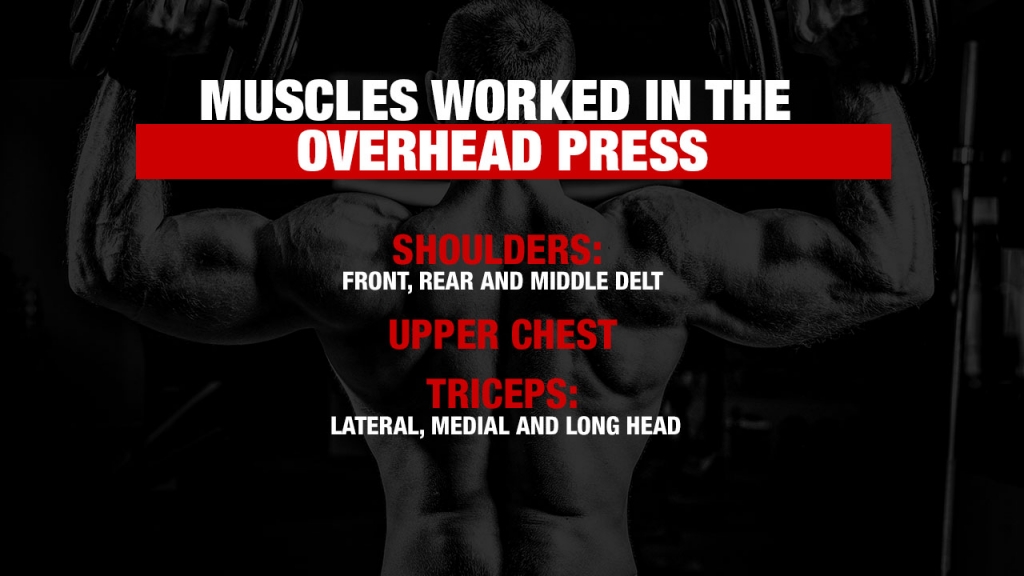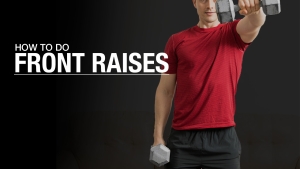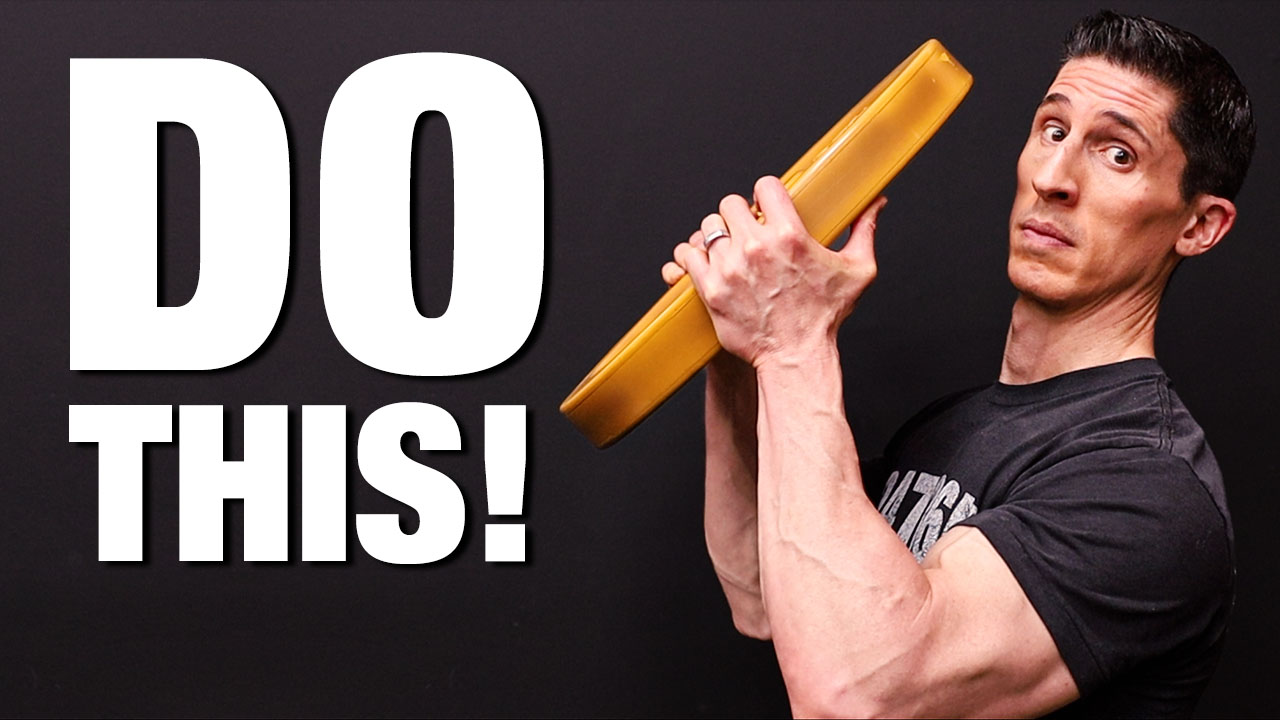
HOW DO YOU OVERHEAD PRESS?
Guys, I have a question for you: When you’re performing an overhead press, do you have a hard time getting the bar up and overhead the RIGHT way?
Another way to ask this question: When you press up in the Overhead Press, where does the bar go?
Is the normal range of motion out in front of your body at an angle?
If this sounds like your performance, you might be costing yourself shoulder strength and muscle mass gains. More importantly, you could be putting yourself at higher levels of risk for injury to the delicate shoulder structures in the shoulder joint.
If you want to build some serious strength, the barbell overhead press variation is the compound lift to do BUT here’s the catch:
You need to perform it with proper form.
Specifically, you need to have an efficient movement pattern. That means you need a bar path that goes straight up.
Here’s what I’m going to breakdown today: The two movements you need to do in order to power up and perfect your overhead press workouts.
I’ll also cover a warm-up assistance exercise to make sure your muscles are primed to press up with correct form in a straight bar path. This is going to be critical during your next shoulder workout routine.
Let’s get to it!
ANATOMY OF THE SHOULDER MUSCLES
Let’s start by reviewing the anatomy of the prime movers and other muscles involved in upper body strength that help with the overhead shoulder press.
You know me, guys – I want you to understand the primary muscles you’re targeting, as well as all other muscles involved, so that you can build that all-important mind-to-muscle connection. This also helps to avoid muscle imbalances.
The standing overhead press is a complete shoulder building exercise for strength athletes so it’s important to know what’s involved as much as you can.
This movement is a compound exercise. And when you do barbell overhead presses, also called overhead push presses, or standard shoulder presses, you’ll primarily activate the shoulder muscles, but you will notice it activating a lot of muscles that also help during the bench press variation.
SHOULDERS: FRONT DELT

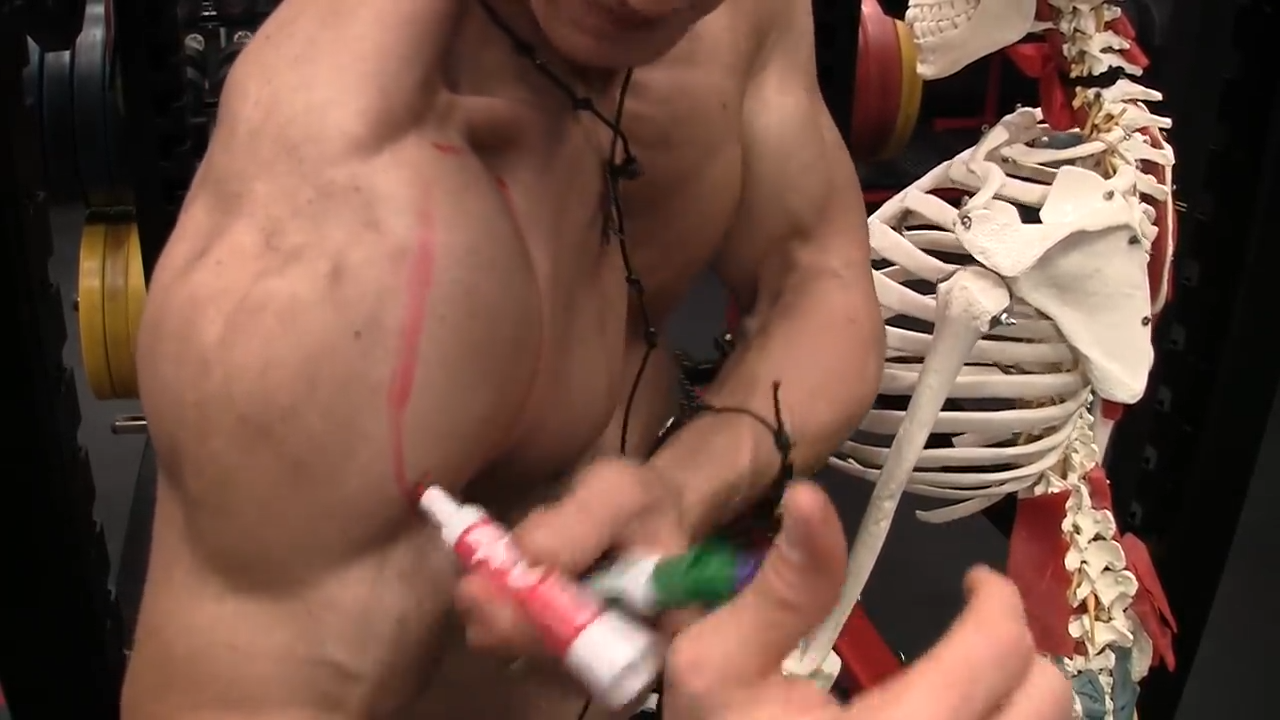
SHOULDERS: REAR DELT

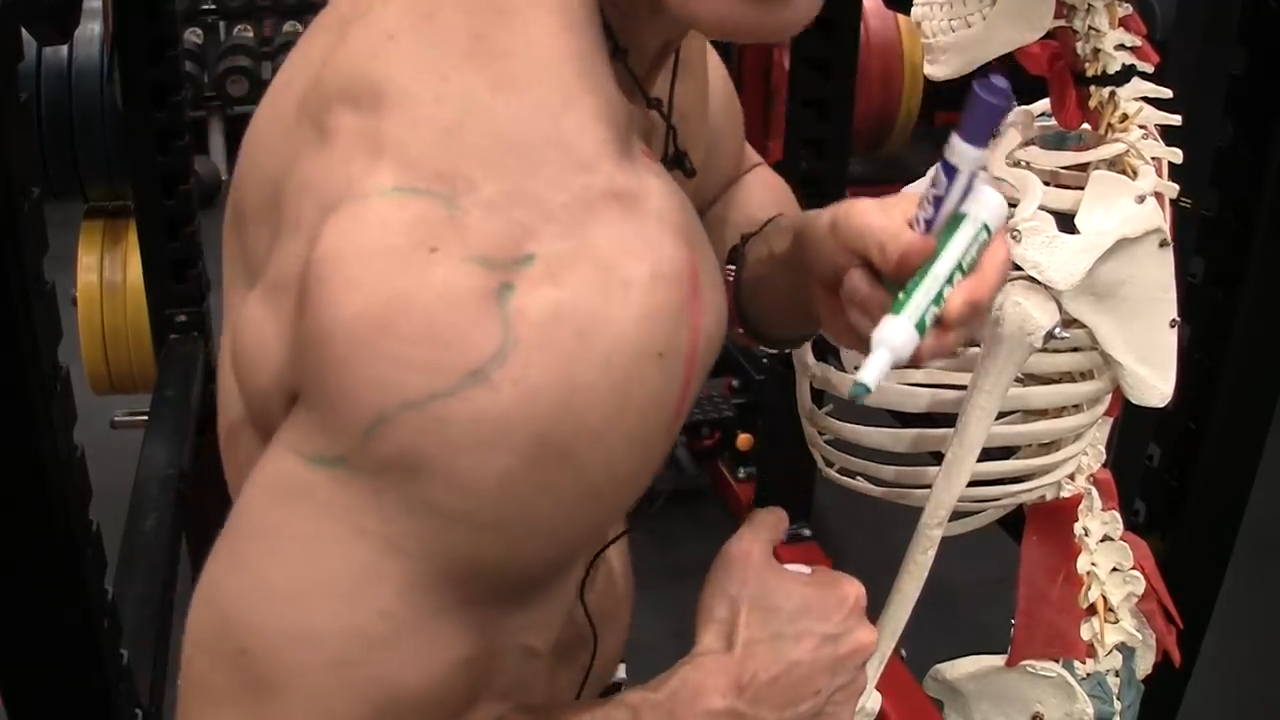
SHOULDERS: MIDDLE DELT (LATERAL DELTS)

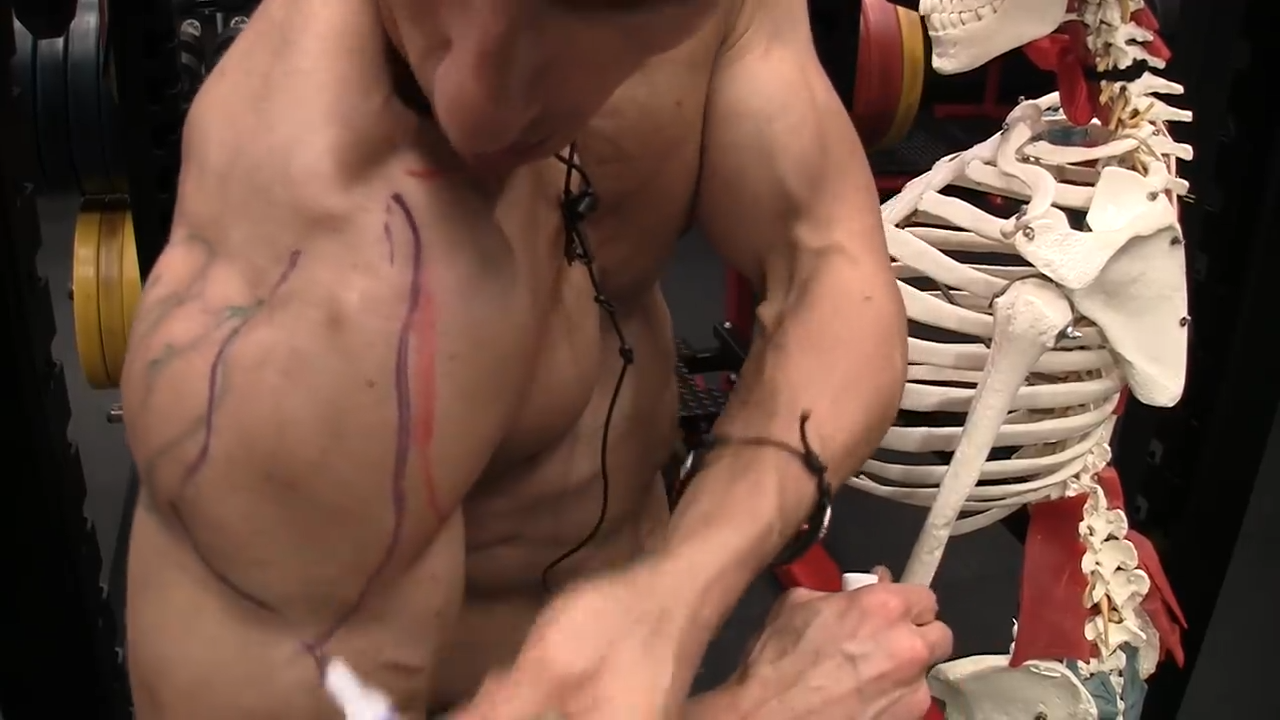
Aside from the deltoid muscles, there are other muscles that help out with stability in this overhead movement:
UPPER CHEST


TRICEPS BRACHII: LATERAL HEAD

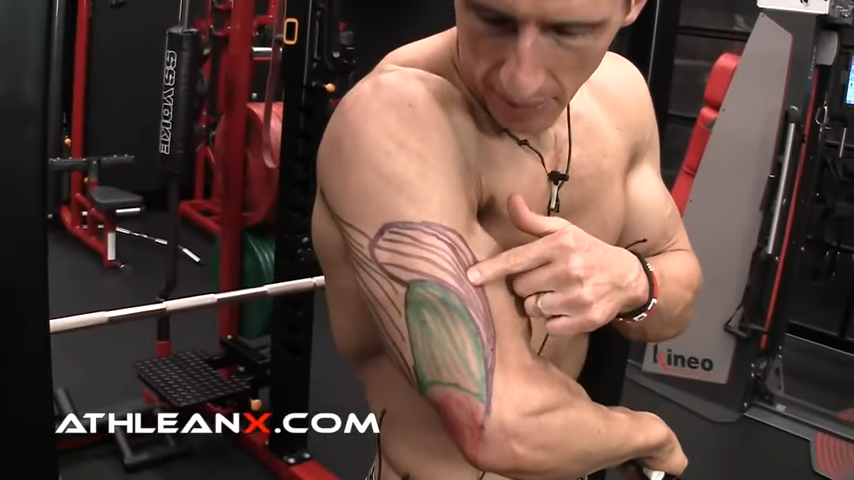
TRICEPS BRACHII: MEDIAL HEAD

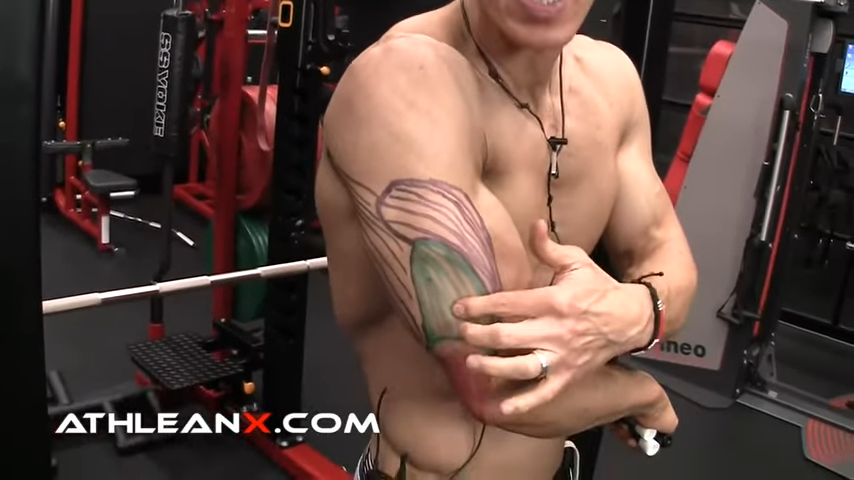
TRICEPS BRACHII: LONG HEAD

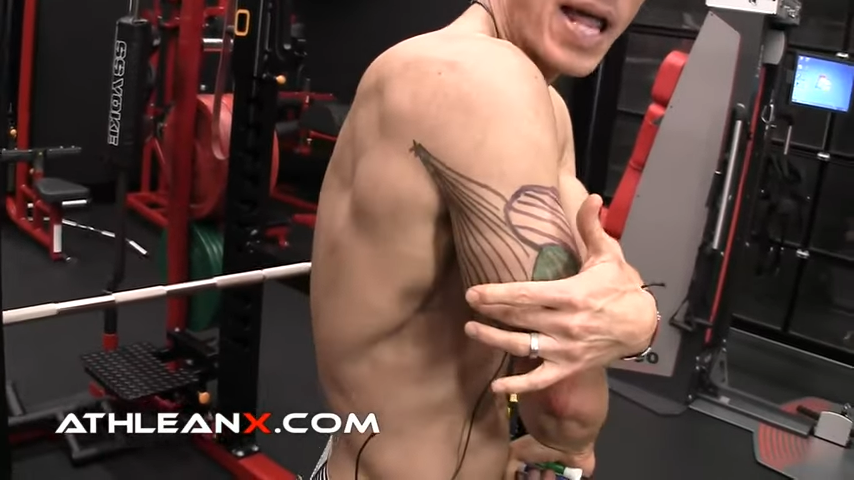
In terms of secondary muscles, your core muscles and abdominal muscles will also help to keep your upper body straight. Core strength and core stability are essential for proper posture and movement inside and outside of the gym. Make sure to maintain core activation when you are performing the barbell shoulder press.
The pectoral muscle or chest muscles, especially the upper chest, will also be there to act as a stabilizer.
But the muscles mentioned above are the main players in the overhead press.
WHY YOU AREN’T PERFORMING THE SHOULDER PRESS CORRECTLY
Let’s jump into the reason why you aren’t activating those muscles properly and why you’re not able to do a perfect overhead press.
You guys can play along at home during this analysis of shoulder muscle and the overhead position.
From a standing position, what I want you to do is turn to the side while standing next to a mirror and flex forward a bit.
This is how you might look most of the time – a lot of us do this and we don’t realize it. Instead of having an upright position, we naturally move into a rounded back. This is one of the most common mistakes involving posture.
Try to raise your arms up as high as you can from this starting position.
Your arms don’t have much range of motion, do they?

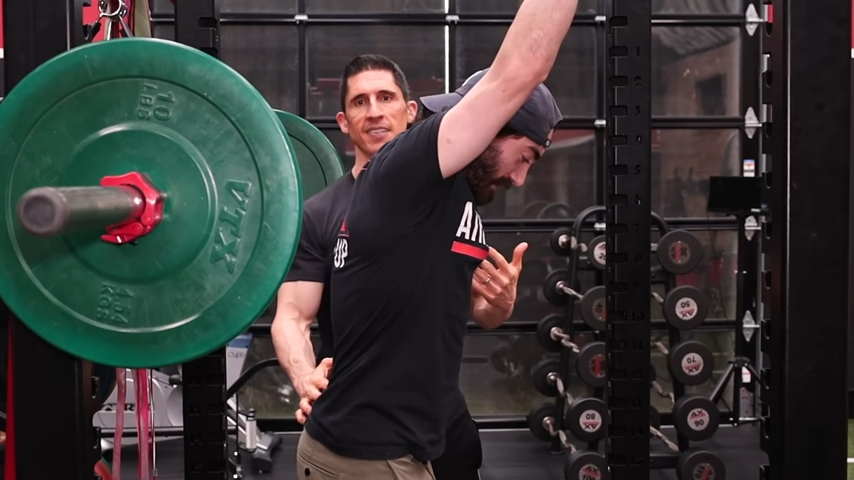
The same thing happens when you have internally rotated shoulders and attempt to push overhead: bad shoulder flexibility.
The reason for that anatomical stalemate and your terrible range of motion is due to something called the greater tuberosity, which can be found on the humerus.

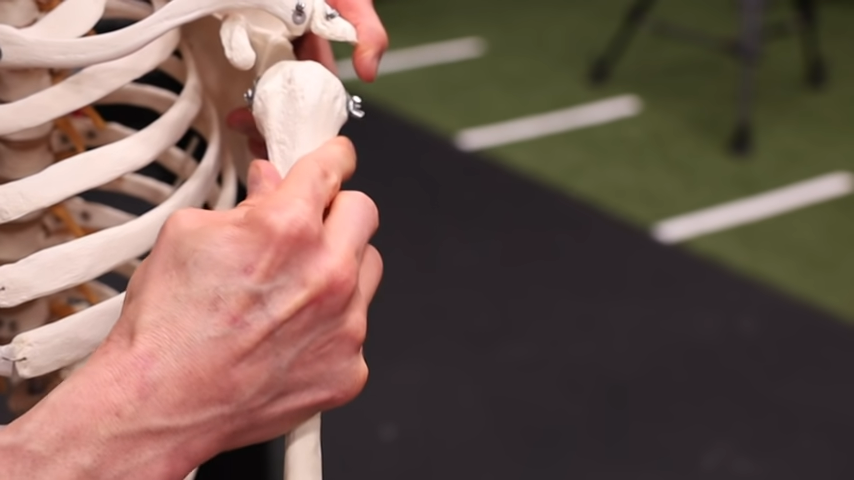
If you can externally rotate the shoulders, you’re better able to achieve thoracic extension and guess what happens?
You’ll be in a more outside position that allows the humerus to be elevated without stopping. No more bony blocks!

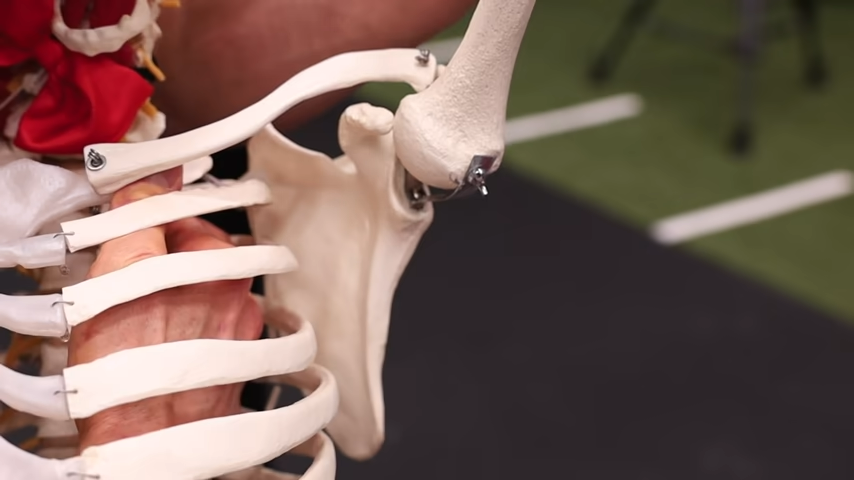
HOW TO FIX THESE ISSUES
So, the question is HOW do you achieve thoracic extension and externally rotated shoulders that results in perfect barbell overhead pressing?
I have one foundational lift that addresses both of these requirements, and it’s something that will literally take a minute or less.
Before you go over to the barbell and get ready to press, I want you to do this instead:
From a neutral stance in standing position (NOT a seated position), I want you to take a weight plate – I recommend using lighter weights between 25 and 45 pounds. No need to use heavy weight here.
Watch your grip here. In fact, I want you to take a neutral grip and grab it at the four o’clock and the eight o’clock position.
The type of weight matters here. While you can do this with other things like a kettlebell, I highly recommend sticking with a weight plate.
Make sure that you’ve got straight wrists and good thumb support on the plate.
From a strong standing position, you’re going to press the plate up overhead and go back as far as you can.

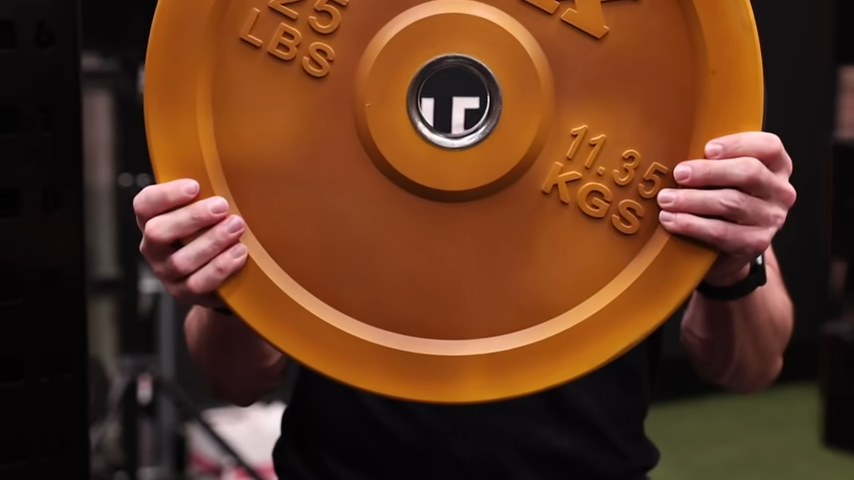
In other words, as you raise it up, don’t let the arm slide up as it goes. Instead, keep it centralized so that as it goes up, it stays in the middle with control.
What that does is continue to create room in this joint so you can press overhead and get to that fully extended position.

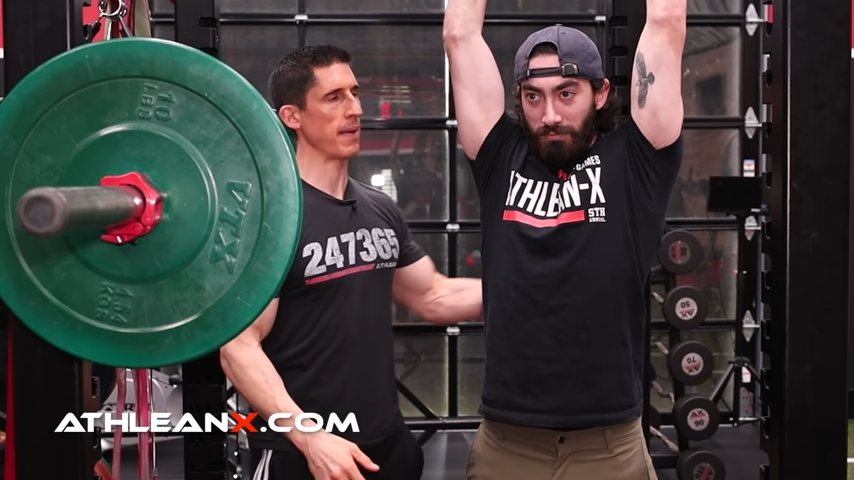
WHY THIS WORKS
The reason this works so well is due to a few factors.
First, this is a loaded mobility drill for the shoulders. Why’s that important?
Oftentimes, people will spend their time focusing on mobility drills that don’t incorporate a load into them.
Even if you feel loose after doing them, when you go back and put your body under some heavier weights like barbell squats or barbell overhead press exercises, the carryover from the drill is minimized.
This is because the muscles are firing differently under load than they are without.
Even with a moderate load in your hands, you’re able to activate muscles in a different and more effective way.
Second, this combines both requirements of a proper overhead press in one movement. In other words, you’re achieving shoulder external rotation and thoracic extension.
One without the other will never produce an arm that is capable of moving straight up overhead due to bony blocks that become involved because of the simple anatomy of the shoulder.
Finally, this one movement primes the stabilizing muscles of the press in ways that help reinforce the proper mechanics of the shoulder joint during the press.
One of the main roles of the rotator cuff muscles is to centralize the head of the humerus within the glenohumeral joint during overhead pressing.
And the act of externally rotating the shoulders when you grab a plate and hold it low enough to encourage even more rotation, allows these rotator cuff muscles to realize the need for them to get involved.
Perform this movement for five reps. You can even rest for a minute and throw in a second set to be sure.
But don’t worry about muscle failure. Remember that this is just a warm-up exercise.
FROM PRACTICE TO EXECUTION
After you’ve performed that movement for at least five reps, put it down and step up to a squat rack with an unloaded barbell. Again, no need for heavy loading here.
What you’ll find is that not only can you press the bar straight up overhead more easily with correct form, but you can actually do so with more brute strength because of the efficiency of the movement.
When we’re talking about building strength and the exercise, the efficiency of that bar path is going to matter.
One note of importance with the overhead press is this:
It’s really important when you do an overhead barbell press to maintain shoulder health and you can achieve this by pressing out of what we call the scapular plane.
This means you press in a slightly forward angle.

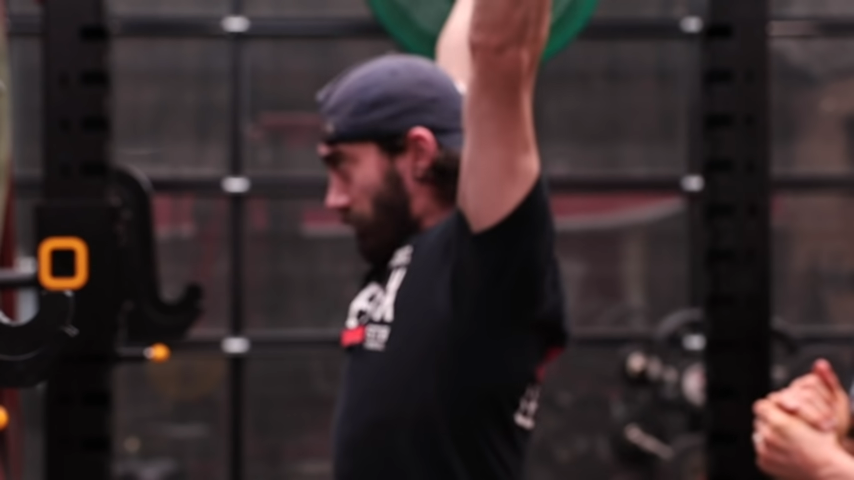
You’ll see that as you move through a straight bar path and stay within the scapular plane head position peeks through.
And this makes it appear as if the body has moved forward or the bar has moved backwards when, in fact the bar path has stayed the same and the shoulders have stayed in that correct position.
I’d recommend having someone spot you and give you feedback on your form as you press an unloaded bar within this barbell path. Poor form can cause injury, so be sure to perform this exercise properly.
These recommendations apply to both shoulder press variations: the barbell shoulder press and the dumbbell shoulder press.
Once you’re all warmed up, confident, and green-lighted by a spotter, go ahead and throw some plates on the barbell.
HOW TO DO THE OVERHEAD PRESS
- Starting position is standing with a heavy barbell in a power rack so that the barbell is at chest height. Feet should be able shoulder width apart in a stable position.
- Place your hands in an overhand grip on the barbell in the squat rack at shoulder height and a slightly wider grip than shoulder width.
- Step back and hold the bar with an arm position at shoulder level and brace the abs and lats. Use leg power to drive down through your feet.
- Press the barbell directly overhead with forearms vertical but in a slightly forward angle to allow the head position to peak through.
- Slowly lower to the starting position.
And there you have it, how to do an overhead press the RIGHT way with correct form.
Guys, remember, it’s not just the shoulder exercises you pick, but why you’re doing what you’re doing that gets you the results.
To get a complete resistance training program that covers all of these important details and helps you build incredible size and strength, and gives you the best training motivation, check out our ATHLEAN-X programs. We have an entire list of training programs that get awesome results, regardless of whether you’re a beginner, an intermediate lifter or a seasoned lifter.

- The benefit of barbell shoulder presses are that it is a great way to trigger muscle hypertrophy in the upper body muscles and build strength in your shoulders… but only if you perform it correctly.
- The key to any movement done for strength is to make sure your bar path is efficient.
- Most of the time, the inability of the lifter to press the bar straight up overhead comes from a lack of proper shoulder mobility and flexibility.
- What you can do to fix this is grab a 25, 35 or 45-pound plate and hold it at the 4 o’clock and 8 o’clock position with your hands. Be sure to let your thumbs ride up the back side of the plate for additional support.
- Press the weight plate overhead and attempt to reach it backwards at the top (almost as if you were trying to hand it to someone behind you). With each rep, feel as if you reach higher with a straighter elbow position and are able to get the plate behind you even a little bit more.
- Perform a 3 to 5 rep range of this in a slow and deliberate manner. Attempt to get back a little further each and every time you press the plate overhead. Make this a part of all your upper body strength training workouts.
OVERHEAD PRESS / SHOULDER PRESS FAQS
Overhead presses are a classic strength training exercise that help build stronger shoulders and also improve muscle growth in the shoulders. You use your entire body for barbell pressing, but this is also an excellent exercise to work shoulders, upper chest and triceps. Use proper form when performing this compound exercise including correct elbow position and core activation. Practice your overhead presses with lighter weights to get your correct shoulder press form down before using heavier weights. Bad form puts you at risk of injury or shoulder pain. You should do overhead presses for 1-2 workouts per week to get maximum benefit from this resistance exercise. We don't recommend doing machine shoulder presses because it can place your body in suboptimal alignment.
Overhead presses are a challenging exercise that help with muscle growth in the shoulders, upper chest and triceps, although technically it is a full-body exercise. Be sure to use proper form in terms of body positioning and barbell path. Bad form puts you at risk of injury, wrist pain and shoulder pain. Overhead press exercises are integral for balanced shoulder development in an effective training program. If your fitness goals include increasing shoulder size and strength, it's recommended that you add overhead presses for 1-2 workouts per week in your weightlifting program.
There is really no difference between overhead presses and traditional shoulder presses performed with a barbell. This exercise makes up an important part of any effective shoulder workout and will help you build muscle mass in the shoulders, triceps and upper chest. Be sure to use proper overhead press for for balanced shoulder development and shoulder health. Bad form puts you at risk of injury, wrist pain and shoulder pain. Do a warm up before your overhead presses so that you have mobile wrists and adequate shoulder mobility before beginning. Include the conventional shoulder press into your strength training program for 1-2 workouts per week.
Shoulder presses are an excellent exercise for upper body gains. The major muscle they target is the shoulders but they also hit the triceps arms muscles and upper chest muscles. Be sure to use strict form throughout the entire lift to avoid risk of injury. Bad form puts you at risk for wrist pain and shoulder pain. Shoulder presses are one of the best upper body weight training exercises to build muscle mass, so it's recommended to do 1 day per week programming.
- Starting position is standing with the barbell in a power rack so that the barbell is level with your chest. Feet should be able shoulder width apart.
- Place your hands on the bar in an overhand grip and a slightly wider than shoulder width grip.
- Step back and hold the bar at shoulder level and brace the abs and lats. Use leg power to drive down through your feet.
- Press the barbell directly overhead with forearms vertical but in a slightly forward angle to allow the head position to peak through.
- Slowly lower to the starting position.
The standard shoulder press is an excellent exercise for muscle growth in the shoulders. As with all compound movements, use proper technique and avoid bad form in this upper body movement to avoid muscle pain, shoulder injury and wrist pain. Practice this shoulder movement with light weights or no weight on the bar before adding heavier weights. Advanced lifters can use heavier weights as they build strength. Incorporate them into your exercise routine 1-2 days per week.
We don't recommend using a machine for shoulder pressing because it can place your body in suboptimal alignment.
The dumbbell overhead press or shoulder press is performed in much the same way as the barbell variation.
- Starting position is standing with feet shoulder width apart and a dumbbell in each hand at roughly shoulder height.
- Starting with the dumbbells at shoulder height, press the dumbbells into position over the head with forearms vertical.
- Slowly lower to the starting position.
This upper body exercise is excellent for shoulder development and muscle growth.
The dumbbell shoulder press is an excellent upper body movement. The major muscle it works is the shoulders, but the dumbbell shoulder press also hits the upper chest and the triceps arm muscles. Be sure to use proper form with the dumbbell shoulder press to avoid muscle pain and injury. You should incorporate these shoulder dumbbell overhead presses into your bodybuilding workouts 1-2 times per week.
REFERENCES

Jeff Cavaliere M.S.P.T, CSCS
Jeff Cavaliere is a Physical Therapist, Strength Coach and creator of the ATHLEAN-X Training Programs and ATHLEAN-Rx Supplements. He has a Masters in Physical Therapy (MSPT) and has worked as Head Physical Therapist for the New York Mets, as well as training many elite professional athletes in Major League Baseball, NFL, MMA and professional wrestling. His programs produce “next level” achievements in muscle size, strength and performance for professional athletes and anyone looking to build a muscular athletic physique.
















